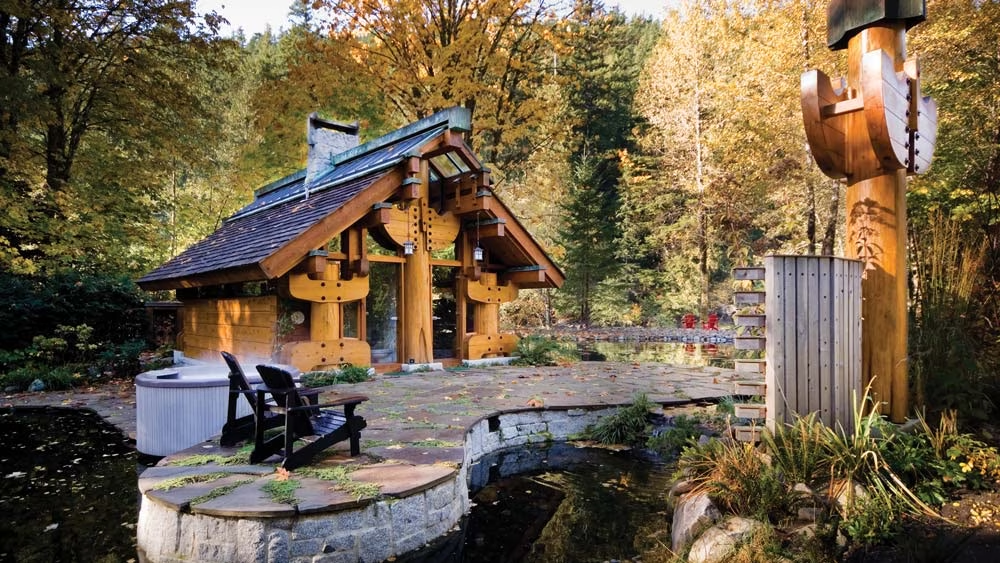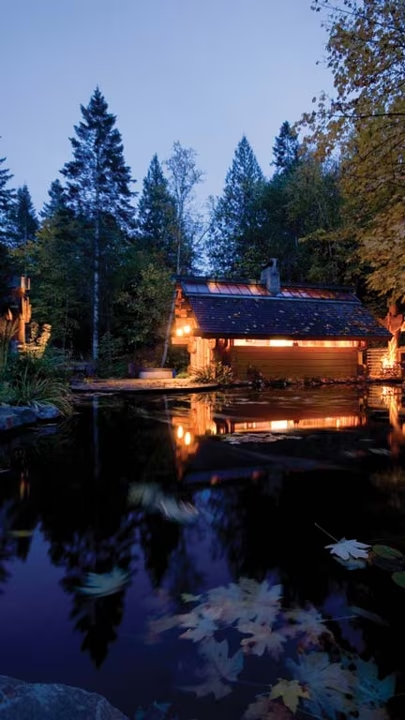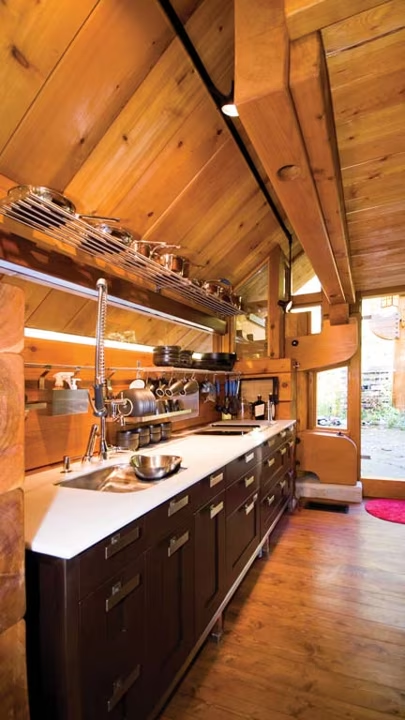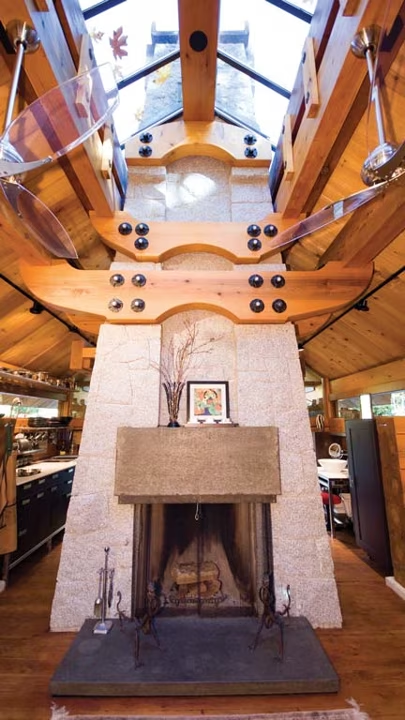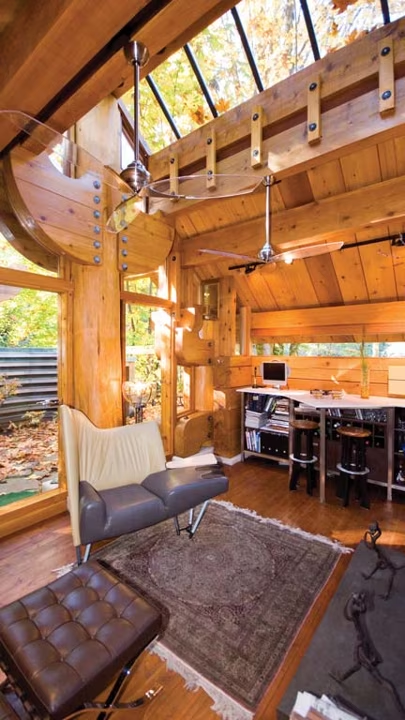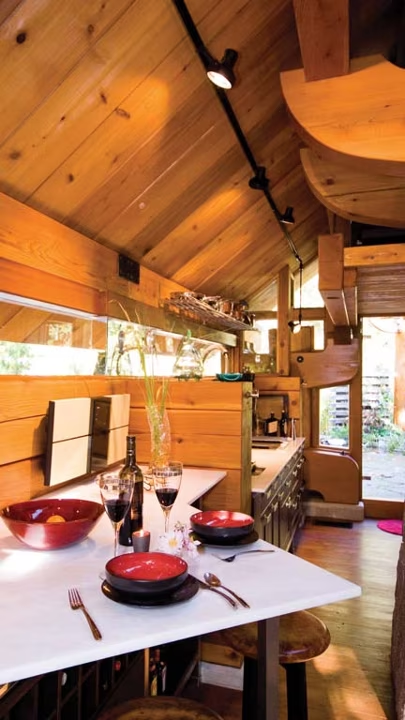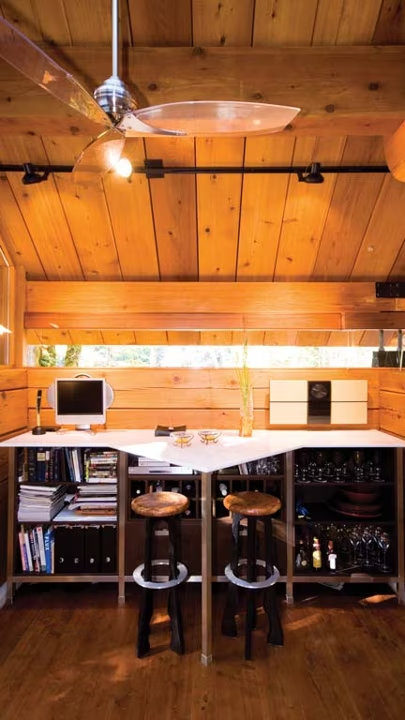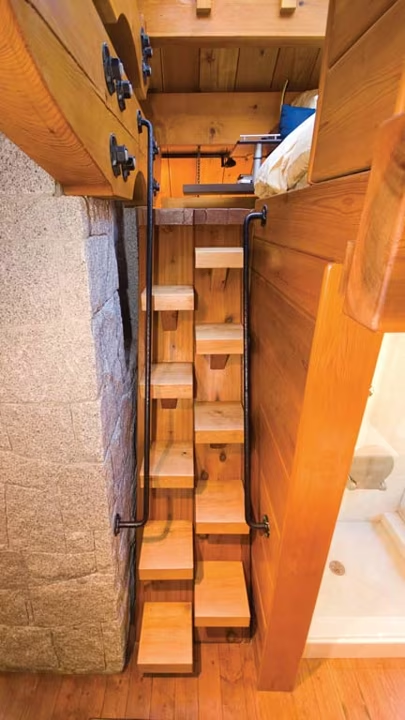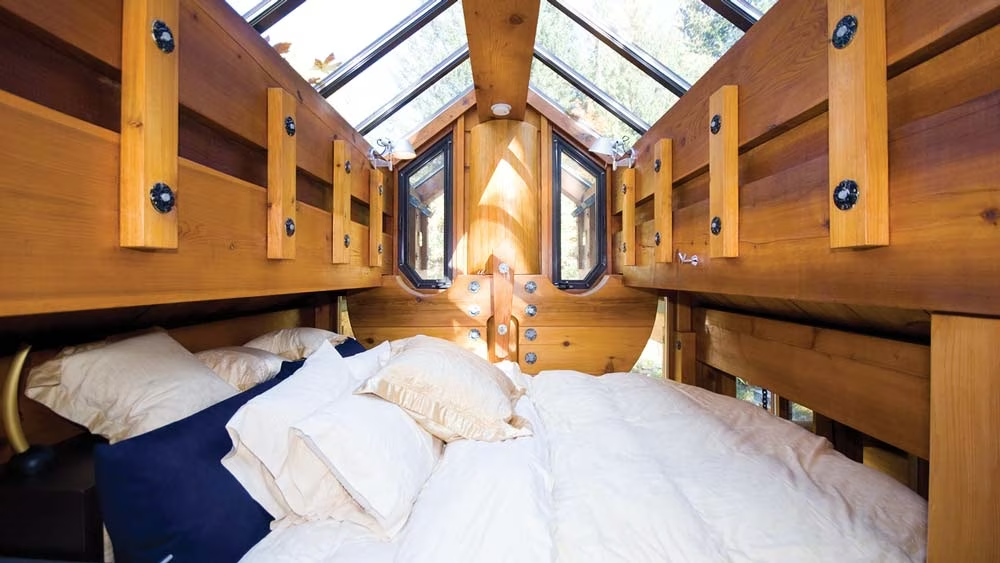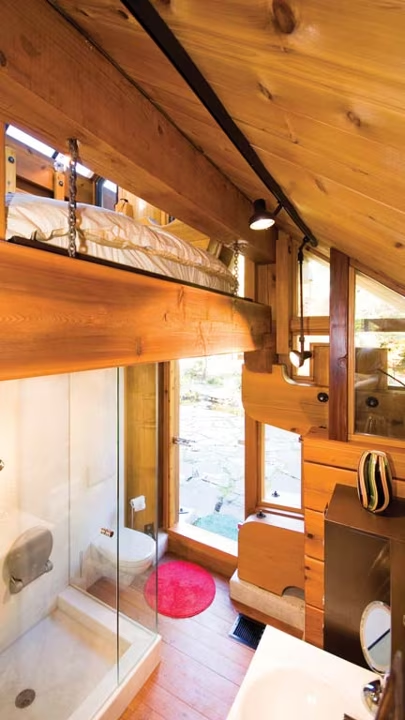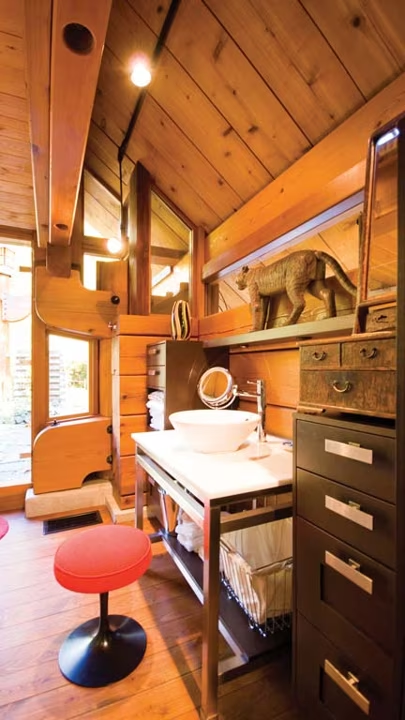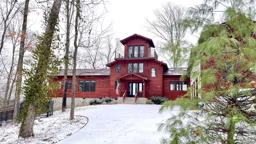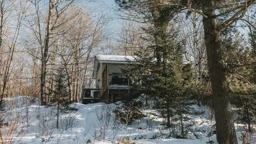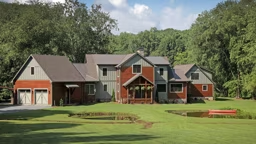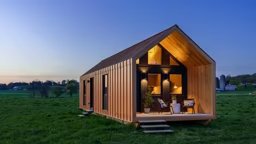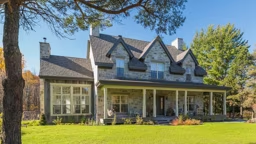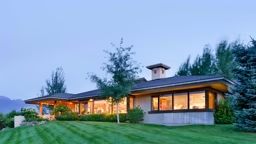Photography by Stuart Bish
Home by Henry Yorke Mann Architecture
Before the structure known as “The Totems” arose on this pristine riverfront ground, an early 20th-century pioneer’s cabin stood on that same footprint. But the two homes couldn’t be more different: One was cobbled together with simple survival in mind; the other designed with an eye toward the spiritual and natural echoes of the land, at the same time taking full advantage of every bit of craftsmanship that contemporary architecture has to offer.
The Totems is the third log home built on the 10-acre property that Judy and Keith Scott own near the Cheakamus River just north of Squamish, British Columbia. Designed by architect Henry Yorke Mann, the plan had to remain small—about 450 square feet—so it could fit the foundation of the original homesteader’s cabin. “We thought we were building a guesthouse,” Judy says with a chuckle, “but we’ve become emotionally attached to the place. Now we leave the four-bedroom house for the guests and stay here ourselves!”
Like the Scotts, Henry is fascinated with Native American culture and wanted the new home to reflect that interest. After he started the design, Henry had a revelation: “I kept thinking, ‘There’s something I’m not taking care of,’ although the plans were acceptable,” he explains. “I realized I wasn’t seeing what the native peoples could see in the forest, which was the spirit of the land. We used totems to personify that spirit, and although this house isn’t an imitation of a native totem, it’s my response to its heavily wooded site: the flora, the fauna, the climate—the whole works.”
The log courses are a square profile, made of western red cedar; the totem poles themselves are cut from yellow cedar. The logs were scribed to interlock tightly without chinking, and large bolts and cast-iron washers decorate the oversized timbers. “A lot of modern timber framing uses hidden fasteners, but I would just as soon have everyone know what’s holding everything up,” Henry says. “You get a better feeling of how the design is working.”
But wood isn’t the only distinctive element in the home. Large expanses of glass shed light on the diminutive floorplan without the use of standard windows. On either side of the home’s main level, glass strips run the length of the rooms, fastened between the slope of the roof and the top of the log courses. On the opposite sides, large glass doors usher in even more sunshine. The skylight above the loft (basically a glass ceiling) gives the tiny home an open feeling.
The house was built with environmentally friendly and toxin-free materials, a feature emphasized in many of Henry’s designs. His buildings are considered air-transfusive—any toxins in the building materials will eventually pass outside. “Green design principles really interest me, as does the scale of this really small house,” says Keith. The home is like a Faberge jewel box—it continues to unfold and reveal surprises, if you take the time to look. But even if you only lay eyes on it from afar, there’s no denying that what Henry and the Scotts created is an architectural gem. n



